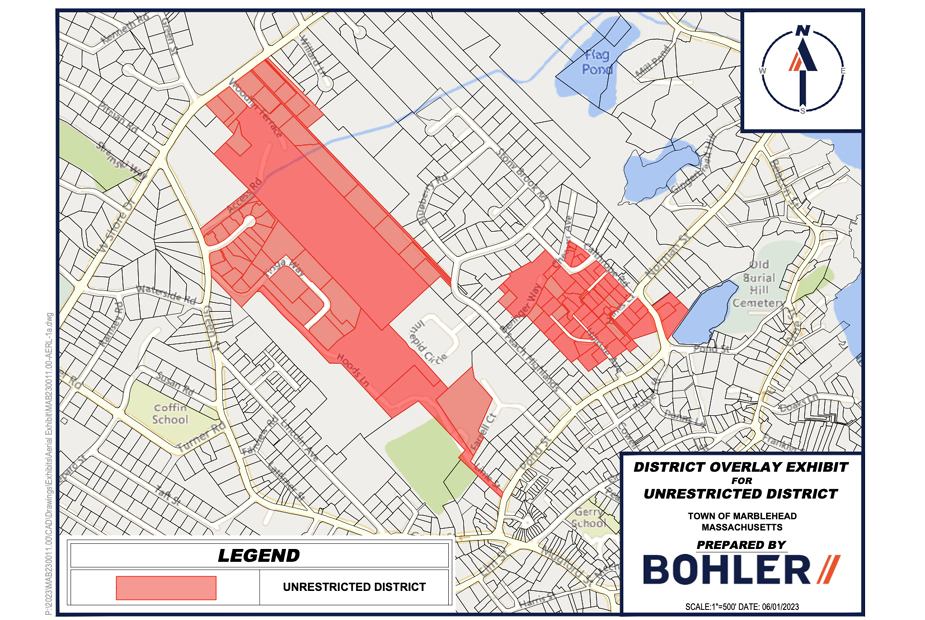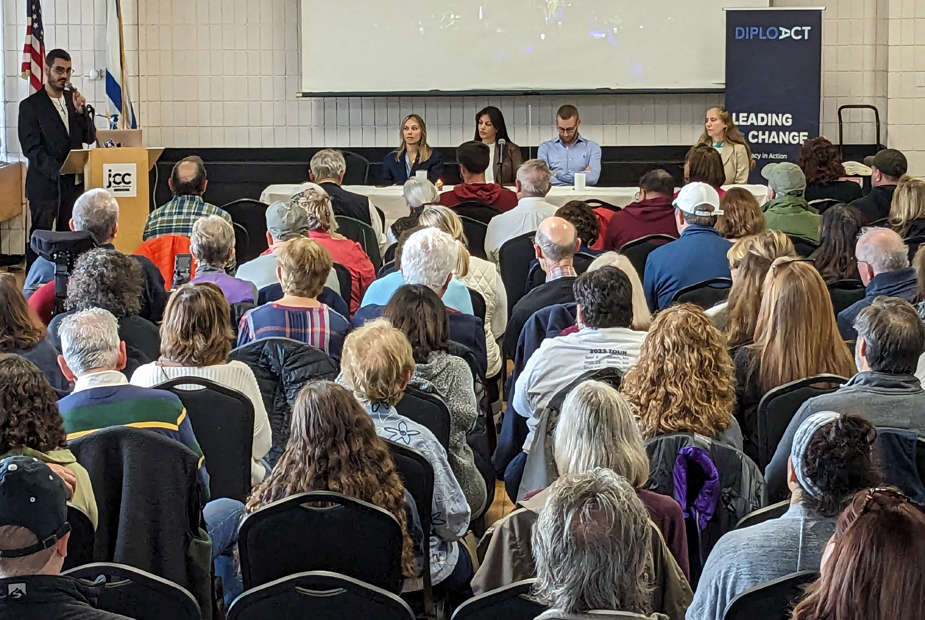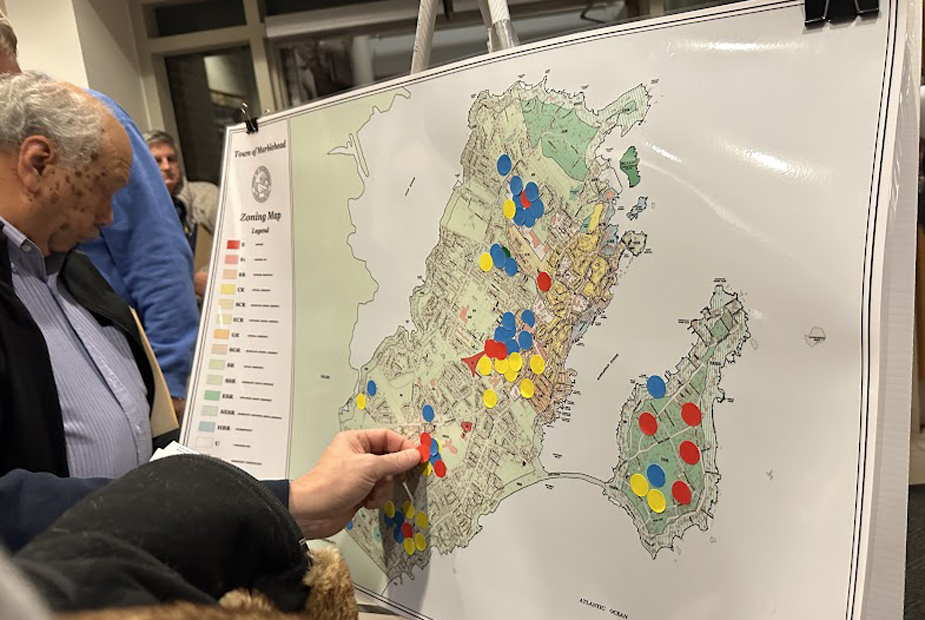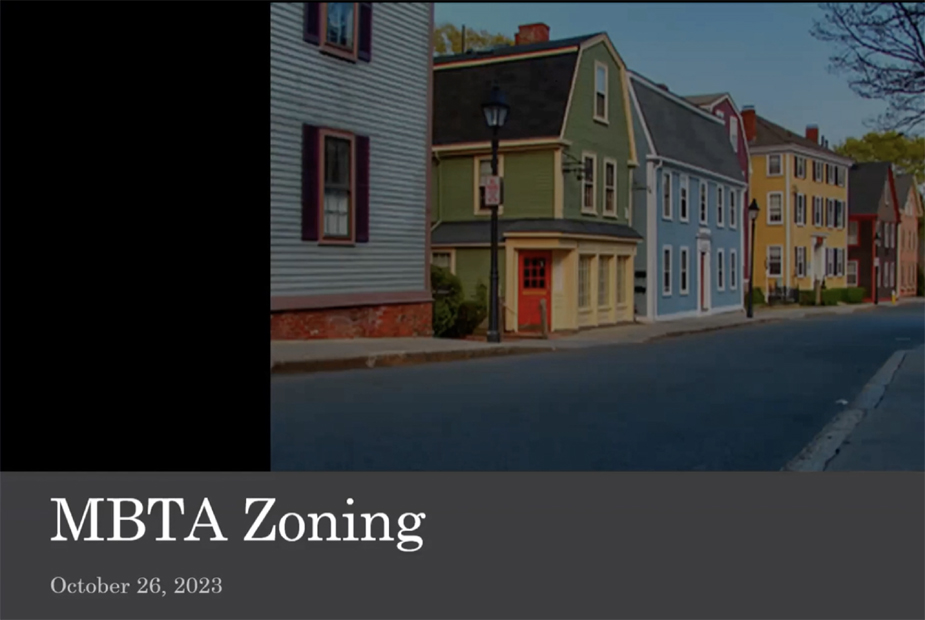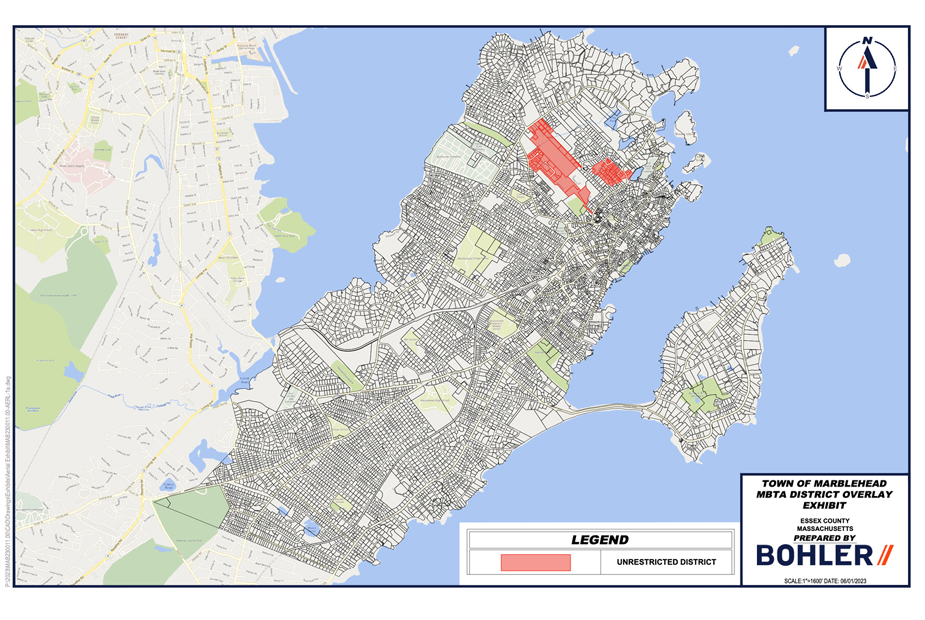Marblehead Considers Zoning Changes to Allow 900+ Multi-family Units
Under a new state law, Marblehead—and 176 other communities across the Commonwealth—is required to select one or more areas in town that will comprise a “district” or "districts" for multi-family housing and change the town’s zoning bylaws accordingly.
Marblehead’s mandate involves 27 total acres and 897 multi-family units at a minimum, with each individual district comprising no fewer than five contiguous acres. The town’s planning board, following guidance from the state, is expecting to hold “visioning sessions” with stakeholders and then will identify locations and draft bylaws by February 2024—to meet the deadline for inclusion in the town warrant. The proposed article(s) would then be considered at the annual Town Meeting in May 2024.
In an editorial promoting “locating housing near existing activity centers [being] preferable to opening up less developed areas,” another local news source incorrectly stated that the district or districts in Marblehead must be “within a half mile of bus service.” This was the case in an earlier iteration of the law, but the Executive Office of Housing and Economic Development (now the Executive Office of Housing and Livable Communities (EOHLC)) issued revised guidance more than a year ago stating that “[t]he bus service category has been eliminated.” This distinction is important because the multi-family district or districts in Marblehead may now be located anywhere in town, with no restrictions based on bus stop locations. While the town ultimately may opt for locations closer to bus stops, it has the option to consider multi-family housing districts virtually anywhere that is buildable.
The Town of Marblehead tasked Bohler Engineering with helping to determine best strategies for ensuring Marblehead’s compliance with the new law, and also to offer draft zoning bylaws for consideration. Bohler has done the same for other municipalities, including Swampscott, in conjunction with the state’s EOHLC.
In Marblehead, Bohler identified and recommended including some 49 acres and 940 units (22 acres and 43 units more than what is required by law) that in part comprise an overlay onto areas that currently have affordable or more dense housing options–also known as “Smart Growth” areas.
Beyond the extra acreage and units, the bylaws proposed by Bohler incorporate significantly more requirements than what is mandated under the new state law, including language designating a certain percentage of units as affordable housing, and specific language about, for example, requiring spaces for bicycles. Town Planner Becky Cutting tells Marblehead Beacon, however, that the bylaws provided by Bohler are not the final word, and that “no decisions on that will be made until we get [community] input.”
New state law
In January of 2021 the “MBTA Communities Zoning Law” (also known as the “multi-family zoning as-of-right” section of Massachusetts General Law Chapter 40A) became law across the Commonwealth. After the passage of this statute that mandates multi-family zoning changes across parts of Massachusetts, guidelines were released by the state to clarify how municipalities should implement it. About half of Massachusetts communities—including Marblehead—are required to comply.
Under guidelines issued by EOHLC pursuant to MGL Chapter 40 A, Section 3A, every city and town in Massachusetts defined as an “MBTA community” was placed in one of the following subcategories: “rapid transit,” “commuter rail,” “adjacent,” or “adjacent small town.” Marblehead was designated an “adjacent community” due to its proximity to commuter rails in both Salem and Swampscott, Cutting told Marblehead Beacon.
What is an “as-of-right” multifamily?
According to state guidelines, an “as-of-right” multi-family dwelling is one for which “development…may proceed under a zoning ordinance or by-law without the need for a special permit, variance, zoning amendment, waiver, or other discretionary zoning approval.” And under the new law, areas in town that will be selected for such as-of-right unit options will have markedly more flexible zoning restrictions, including significantly smaller lot requirements.
How is Marblehead navigating the new law’s requirements?
While the law mandates changes to each MBTA community’s zoning bylaws, discretion exists in each such municipality as to where exactly to allow for such homes. And as municipalities grapple with how to implement the new law, guidance designed to illuminate matters continues to be released. In August 2022, the state issued its “final” guidance on the law, only to then continue to issue additional advisories once the Healey administration came into office. As recently as August 2023, guidance providing explanations and clarifications was released, with no certainty as to when and if more will come. This has left some municipalities with more questions than answers.
Marblehead, according to Cutting, has been placed in a consortium of five other similar communities—Beverly, Hull, Ipswich, Kingston, and Rockport—all being led by Lily Linke, who works for the non-profit Citizens' Housing and Planning Association (CHAPA) as its MBTA Community Engagement Manager. Linke is providing “technical support to municipalities for their education, engagement, and outreach efforts around the new MBTA Multifamily Zoning requirements.”
And as noted earlier, Marblehead engaged Bohler Engineering to analyze where Marblehead stands in terms of compliance and how to best move forward. Bohler issued a memorandum in which it investigated the parts of Marblehead that Cutter had identified as potentially good areas to utilize, as seen below. It was not asked to consider other locations.
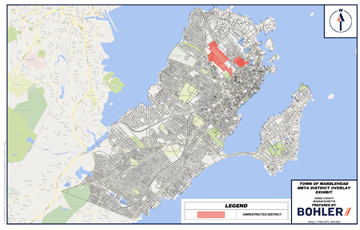
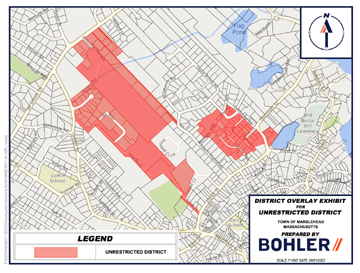
For larger versions of images, click HERE and HERE.
Bohler concluded that, in areas slated for compliance, the following applies:
- “The restriction of the number of units per acre must be increased from the current 12 units/acre to 35 units/acre.
- The minimum lot size requirement must be decreased from the current 10,000 square feet (s.f.) or 5,000 s.f. per dwelling unit, whichever is greater, to 5,000 s.f. to enable the inclusion of existing nonconforming parcels less than the 10,000 s.f. requirement.
- The requirement to provide 5,000 s.f. per dwelling unit must be removed.
- The open space requirement has been reduced from 1 s.f. for each 1 s.f. of gross floor area to 1 s.f. for each 50 s.f. of gross floor area.”
Until there is public input, though, says Cutting, it is unclear which parts of the recommendations from Bohler’s report will be acted upon. Town officials appear aware that there could be controversy ahead of Town Meeting next May. Marblehead’s advisory Housing Production Plan Implementation Committee (HPPIC) discussed this topic during a meeting on Tuesday, September 26th, with member Kurt James noting that “there is a fair amount of public process involved, especially if we’re talking about essentially rezoning fairly large areas of town.” He continued, saying, “given the process you mentioned that we went through with 40R [Accessory Dwelling Units] there was a lot of interest in terms of where these areas were going to be and we carved back a couple of these areas because of the public response.”
At September 29th’s Planning Board meeting, there was discussion about a variety of locations in town, as well as the merits of possibly choosing to designate an area of Marblehead in which development of multi-family units would be less likely to take place, at least in the near term. One example that was brought up was the area that includes the Mariner and surrounding areas. Chair Bob Schaeffner, however, noted that it is important that in presenting the subject to the community, the Planning Board be “genuine” and plan to move forward with the “spirit of the law” in mind—a reference to the state’s desire to address the lack of housing across the Commonwealth, and not merely designate areas that are unlikely to be converted into multi-family units.
Planning Board member Marc Liebman pointed out that with so much unknown and unclear in terms of precedent and actionable guidance from the state, it is difficult to make substantive recommendations. He questioned, for instance, how creating significantly more densely populated areas and the potential of hundreds of new units in town could impact the already burdened school system.
Must the new zoning mandates include “affordable housing”?
A misconception about the new MBTA communities zoning law, noted Cutting, is that it requires the building of “affordable housing,” which refers to housing that is rented or purchased by individuals who meet certain low-income eligibility requirements.
Marblehead does have existing affordable housing units at Oliver’s Pond and Marblehead Highlands for which individuals pay substantially less than market-rate pricing, under MGL Chapter 40B, and from which reduced taxes flow to the town. Marblehead also has 307 public, state-subsidized units for families, elderly, and the disabled, which are owned and managed by the Marblehead Housing Authority. But whatever the intent of the new state law, its language is silent about designating additional affordable housing.
“There is no affordable requirement in this law,” emphasizes Cutting. Nevertheless, it appears that Bohler Engineering and members of HPPIC believe Marblehead should seize the opportunity to go beyond the state requirements and ensure that changes to town bylaws ultimately include additional affordable housing requirements.
“It was encouraging,” said HPPIC member Louis Meyi, “to hear from Becky [Cutting] that a number of localities are doing affordability provisions and I would like at some point to hear more about that and how we can make sure that affordability is part of what the [HPPIC] has as part of a letter to the planning board or some way to try to drive that home.” Meyi went on to note that “you may recall last year in the accessory dwelling unit discussion, affordability was brought up quite frequently, but for this or that reason, it didn’t make it into what got into the warrant and what got voted on, but here’s another opportunity.”
Does the law require that Marblehead have 897 multifamily units by December 2024?
While the law appears to be a mandate, and state advisories come with threatened penalties and legal consequences for failure to comply, the law does not require the actual creation or building of new housing. It requires that the affected 177 municipalities change their bylaws to allow for “as-of-right” multi-family dwellings. After that it would be up to developers or homeowners to decide whether to convert existing space or create new multi-family units.
Each city or town impacted by the statute has a different number threshold, which can be seen in Appendix 1 here. As noted above, Marblehead’s minimum is 897 units and 27 acres, in five-acre-minimum allotments. Other requirements beyond those already discussed include:
A gross density of no less than 15 units per acre, no age-based occupancy limitations, and no limits on the number of occupants or size of units.
Newer guidance has also come down allowing these multi-family dwellings to be “mixed-use” buildings, which means that, for example, they may have businesses on the ground floor and apartments or condominiums on higher levels.
Expected timeline in Marblehead:
*Sometime in October 2023: Pending town officials hearing back from the state with answers to their outstanding questions, there will be community/stakeholder input via one or more “visioning sessions.”
October 2023 through February 2024: Planning Board will assess all stakeholder input and create recommended draft bylaw changes.
February 2024: Proposed bylaw language will be finalized, sent to the state for approval, and put into the warrant ahead of Town Meeting.
February to May 2024: Town officials will pursue outreach to voters to create awareness about pending article(s) in warrant.
May 2024: Voters will decide on amended zoning bylaws at Town Meeting.
What happens if Marblehead does not comply with state law?
The Attorney General’s March advisory left little to the imagination in terms of what—generally speaking—would rain down on communities that opt not to institute the changes. Certain specific grant eligibility could be withdrawn by the state were Marblehead not to comply. And “[c]ommunities that fail to comply with the Law may be subject to civil enforcement action,” wrote AG Campbell. There also is no “mechanism,” said Campbell’s advisory, “by which a town or city may opt out” of the statute, and “MBTA Communities that fail to comply with the Law’s requirements also risk liability under federal and state fair housing laws.”
As some speculate on the law’s legality, one of the 177 affected cities and towns—Holden—has already expressed its objections, resulting in a civil lawsuit led by the non-profit Central Massachusetts Housing Alliance, Inc. (CMHA) on behalf of several clients, including one woman living in a homeless shelter.
And in Rockport, while town officials are complying thus far, a group of residents filed a civil lawsuit claiming, in part, that the new Massachusetts law is unconstitutional given the longstanding “home rule” concept in which municipalities have sovereignty in specific areas which may not be trumped by state laws. The legal complaint also points to the slow and ongoing release of state regulations, along with the failure of the state to submit these regulations to the required regulatory process.
In Marblehead, depending upon the version of bylaws presented at Town Meeting in May, voters conceivably could vote against the measure. If this occurs, it is unclear where the town would stand with regard to compliance. The law does not explicitly address this issue, nor does the available guidance. Marblehead Beacon reached out to Marblehead’s CHAPA representative–Lily Linke–to inquire as to where the town would stand were voters to reject the article presenting draft zoning bylaws. She did not respond as of the time of publication.
Marblehead Beacon also reached out to the state’s EOHLC and heard back from its press secretary, Kevin Connor.
We asked Connor the following: “What happens if the town's voting body (which is Town Meeting in Marblehead) votes the bylaws down? Will Marblehead be out of compliance with the state or will there be an extension granted? In other words, the town's leaders have no control over how the town votes, so that even if the town officials are operating in good faith to get it done, voters may disagree.”
Connor’s responded that “communities must adopt compliant zoning and submit complete district compliance applications to HLC by their applicable deadlines to be compliant. EOHLC and the Massachusetts Housing Partnership (MHP) have been working closely with MBTA communities to provide technical assistance and other forms of support to help cities and towns develop their action plans. To date, EOHLC and (MHP) have provided more than $2 million in technical assistance to over 50 cities and towns.”
Connor’s answer—while illuminating in some ways—sheds no further light on how the Commonwealth of Massachusetts will handle situations in which voters exercise their right to vote against the state requirements.
Editor's note: As of October 14, 2023, this article was updated to include the correct link to the Bohler memorandum.
Editor’s note: School Committee member Jenn Schaeffner is a Marblehead Beacon founder and editor. Schaeffner also serves as a member of Marblehead’s Housing Authority. Her husband, Bob Schaeffner, is the Chair of the Planning Board.

